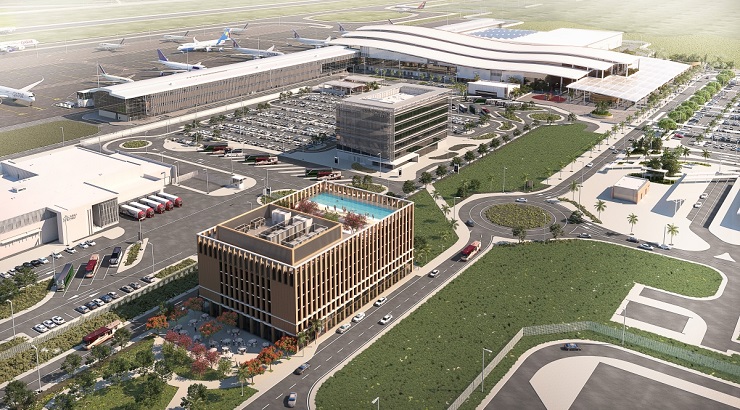Infrastructure
Bugesera Airport: Will Rwanda’s $2bn Bet Pay Off?
IMF warns of rising debt risks due to the airport’s construction costs.

Construction of Bugesera International Airport, 40 kilometres south of Kigali, is well underway as Rwanda aims to become a key aviation hub in Africa. However, the rising costs of the project are raising concerns about their impact on the nation’s finances.
The $2 billion Bugesera Airport project, which has been underway since 2017, includes a 130,000-square-metre terminal and a cargo hub capable of managing 150,000 tonnes of freight each year.
Jules Ndenga, CEO of Aviation Travel and Logistics Holding, describes the scale of the undertaking as “like a dream come true”. He adds, “We are impassioned to see the efforts completed and starting operations.”
The Bugesera airport master plan is central to Rwanda’s vision of becoming a continental gateway for air travel and commerce. Qatar Airways, which now owns a 60% stake in the project, is also acquiring 49% of RwandAir, strengthening Rwanda’s connectivity to more than 65 destinations worldwide.
“The main objective of this effort is basically to make sure that Rwanda becomes an African hub where everyone will be transiting either for tourism, but also for business and different industries,” Ndenga explained. “We see that as not only an impact on the economy but in the neighbourhood… this area will become a satellite city of the city centre.”
Yet even as excitement grows, concerns over the Bugesera airport budget are mounting. The International Monetary Fund (IMF) recently warned that the project could push Rwanda’s public debt to dangerous levels, forecasting it could hit 86.3% of GDP by 2026.
“Despite critical reform to enhance domestic revenue mobilisation, the cost of the planned Bugesera airport construction will intensify debt service pressures,” the IMF said.
The government’s share, at 40%, equates to an estimated $800 million, likely to be sourced through external borrowing.
RELATED: Ethiopian Airlines Hires Designer for $6bn Airport City
To mitigate risks, the IMF has urged Kigali to “ensure the full and timely implementation of newly adopted tax measures” and to prioritise investment projects carefully.
It also stressed the need for “credible fiscal consolidation” and “vigilantly monitoring” risks of cost overruns on major infrastructure initiatives.
Credit rating agencies Moody’s and Fitch have revised Rwanda’s outlook from stable to negative, citing risks from the country’s involvement in the ongoing conflict in eastern Congo.
Fitch noted that Rwanda’s external debt is heavily concessional but warned that repayment costs remain high, particularly with 80% of the debt stock in foreign currencies.
Despite the financial caution, supporters of the Bugesera airport master plan remain optimistic. They argue that by improving Africa’s fragmented air routes—where passengers often detour via Europe—the new facility will unlock vast economic opportunities.
According to RwandAir CEO Yvonne Manzi Makolo, improving connectivity is crucial for enhancing travel within the African continent. “The continent is huge, it’s vast, but it’s difficult and unpredictable travelling within it,” she said.
Africa accounts for just 4% of global air traffic, despite being home to nearly 17% of the world’s population, with mega projects like Bugesera aiming to change the narrative.














